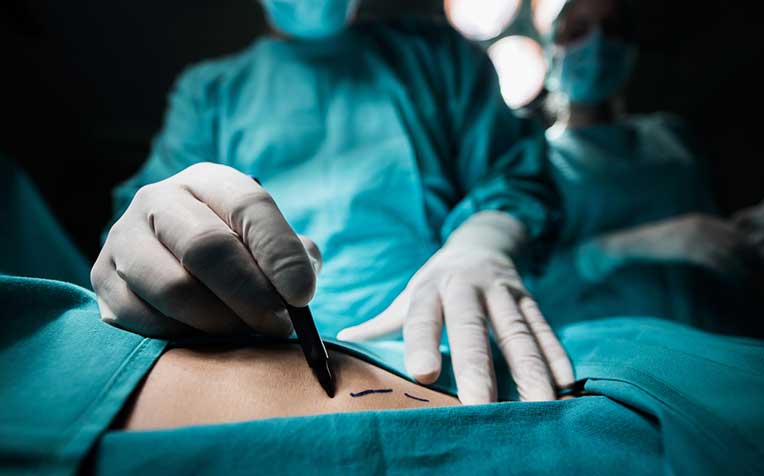
Body contouring surgery is a procedure that removes excess sagging skin and fat as a result of massive weight loss.
After massive weight loss, body contouring surgery or body lift surgery is usually required to remove excess sagging skin and fat whilst improving the shape of the underlying supporting tissue.
“During the phase of weight gain, the skin would have stretched and after substantial amount of weight loss due to bariatric surgery or lifestyle changes, the skin and tissues often lack the elasticity to accommodate the reduced body size,” says Dr Terence Goh, Visiting Consultant, Department of Plastic, Reconstructive & Aesthetic Surgery, Singapore General Hospital (SGH), a member of the SingHealth group.
“Tummy tuck and breast lift procedures have been around for a long time, but what makes body contouring surgery different is both the amount of skin that is removed and the fact that body contouring procedures tend to cover more than one area of the body (e.g. the lower body lift encompasses the tummy, outer thighs, the back and buttocks).”
Who is suitable for body contouring surgery?
Individuals who have lost a lot of weight due to bariatric surgery or from a strict exercise and diet regime can consider this procedure. He or she will also need to have a positive outlook and be committed to a healthy lifestyle post-surgery, with a proper exercise regime and well-balanced nutritional plan.
It is important that the patient’s weight is stabilised for at least 12 months or more, prior to surgery, and should have a BMI of less than 28. Medical conditions such as diabetes that impair wound healing or increase the risk of surgery should also be well under control before surgery.
Types of body contouring surgery
The most common areas for body contouring surgery are the arms, breasts and abdomen as excess skin in these areas tend to interfere with exercise and movement. These include:
Breast lift: To correct sagging and deflated breasts from massive weight loss or breast feeding. Fat grafts or implants may be needed to increase the size of the breasts. The fat can be obtained from other parts of the body where it may otherwise be discarded during body contouring surgery. The breast lift incision will be determined by the size of the breast and the amount of skin to be removed. Scar visibility is minimised wherever possible.
Tummy tuck: To remove the apron of excess skin over the abdomen. This can be combined with a total body lift, which also targets the excess skin over the back and helps to lift the sagging buttock and thighs. However, a full body lift is a complex surgery that requires an extended period of recovery.
Arm lift: This addresses the loose skin in the under arm area as a result of natural ageing or rapid weight loss. The incision for arm lifts is hidden in the underarm area along the inside or back of the arm. Liposuction is often done in combination with an arm lift for better results.
Medial thigh lift: To lift the slack skin in between the inner thighs. This extra skin can cause friction burns and rashes during exercise or daily activities. Reshaping of the inner thighs is achieved through incisions that are hidden in the groin crease.
Face lift: To lift the skin of the mid-face, jowls and neck.
Body lift: A complete lower body lift, also known as a belt lipectomy. It lifts the abdomen, contours the waist, hips, thighs and reshapes sagging buttocks.
Learn about the risks involved in body contouring surgery and recovery time needed.
Ref: N18
Contributed by

















 Get it on Google Play
Get it on Google Play